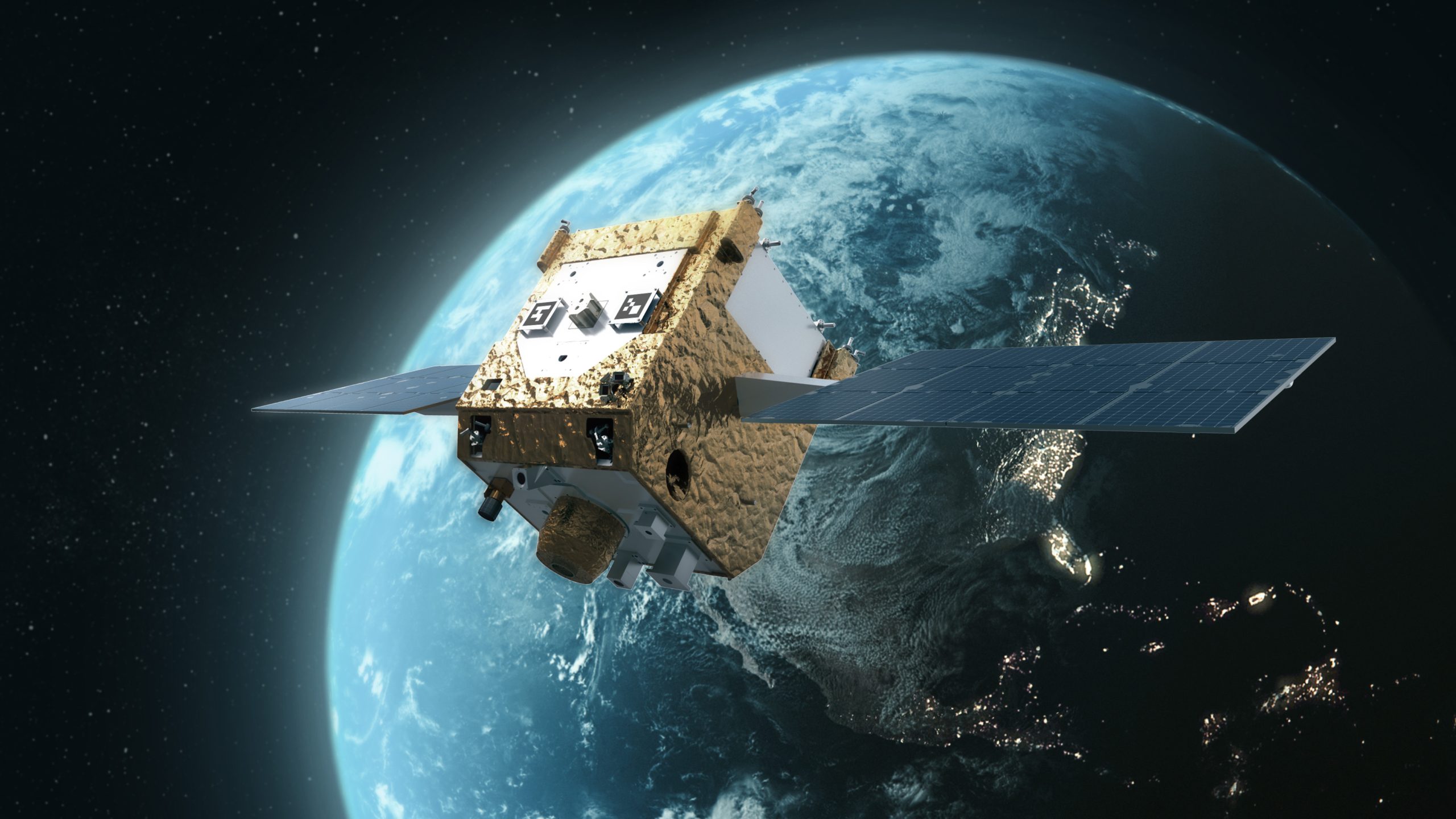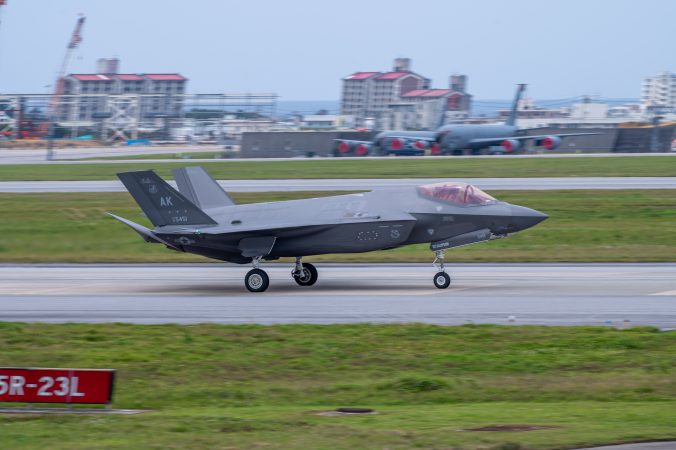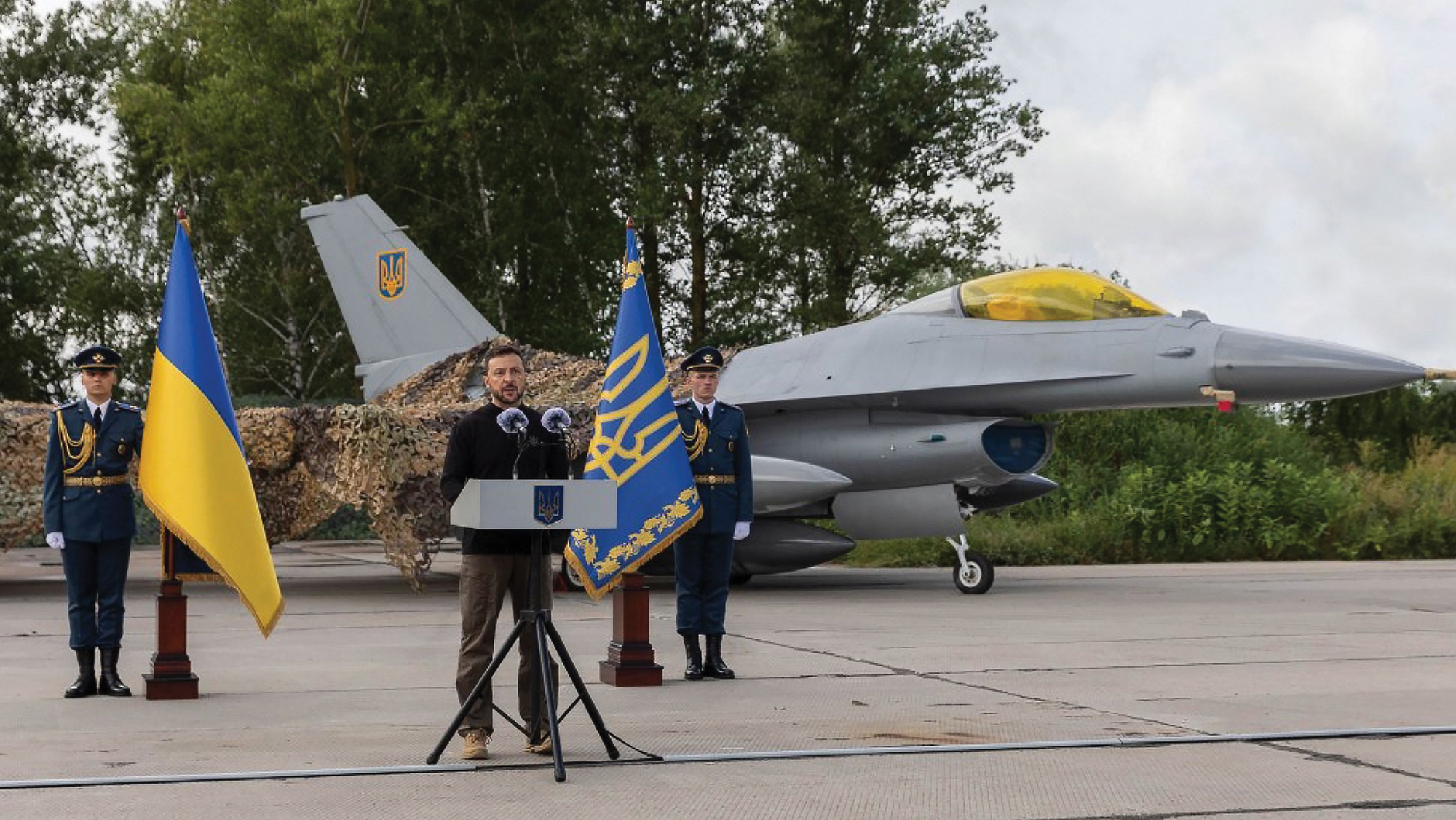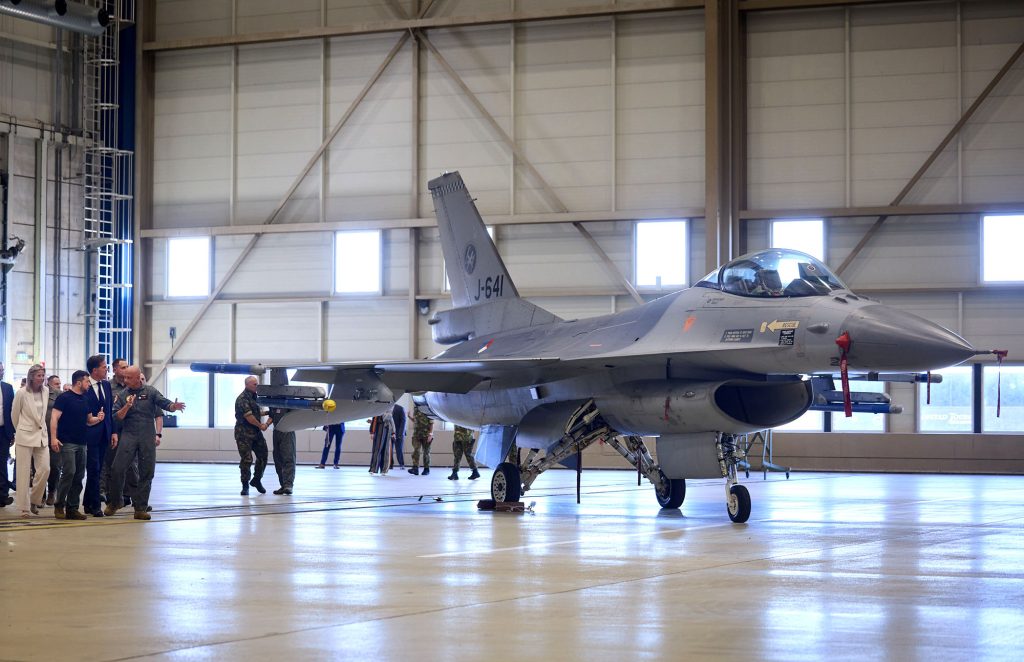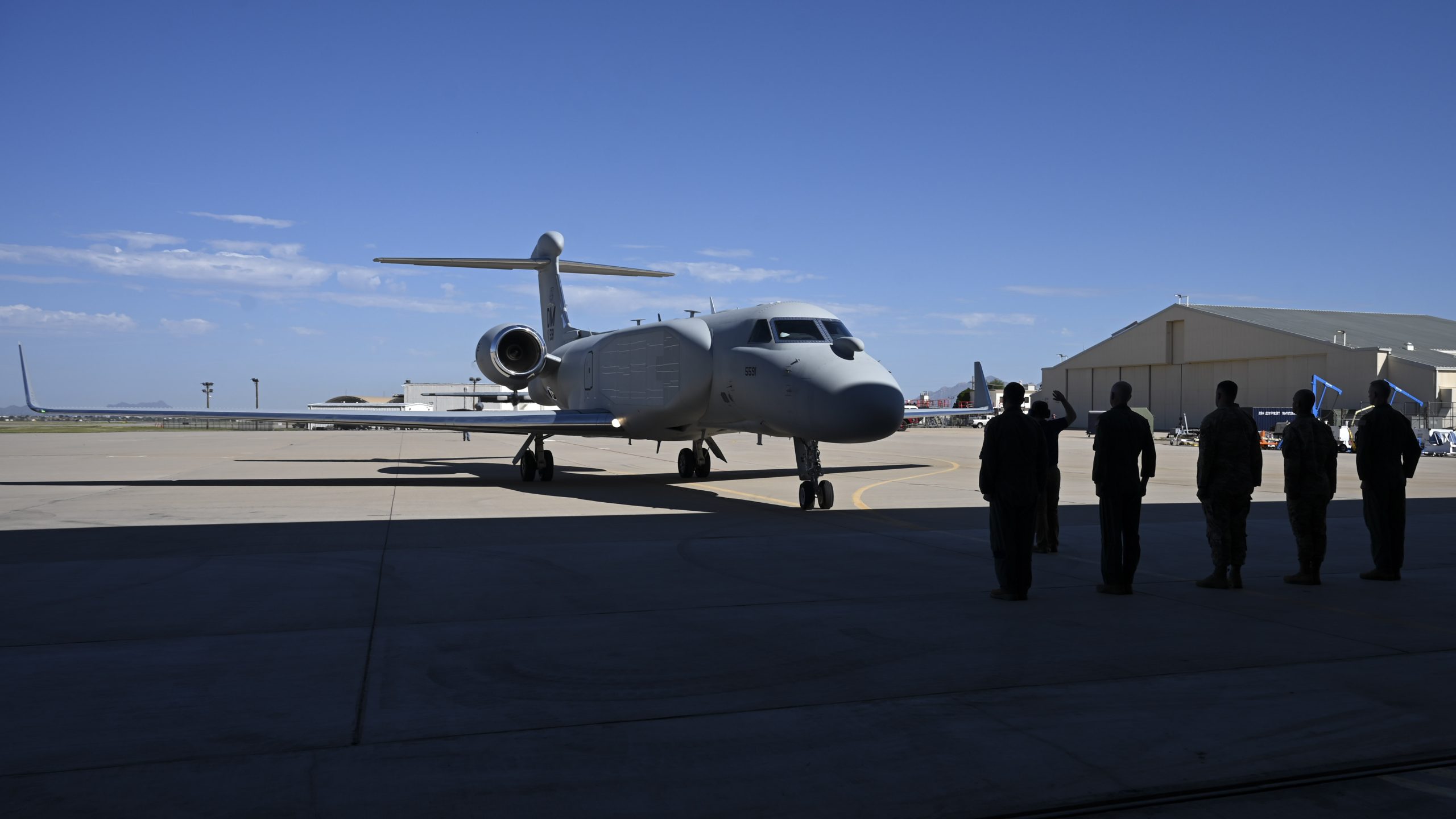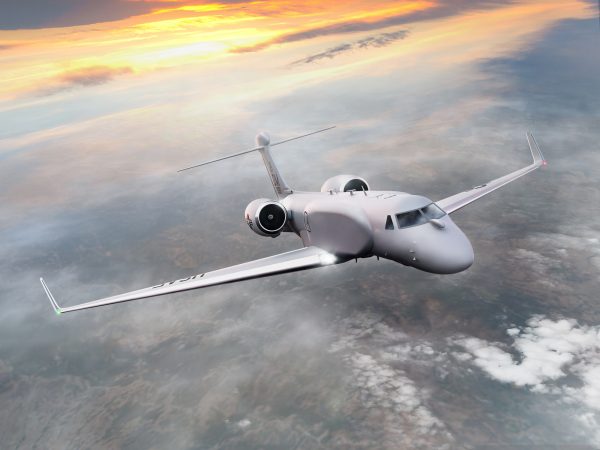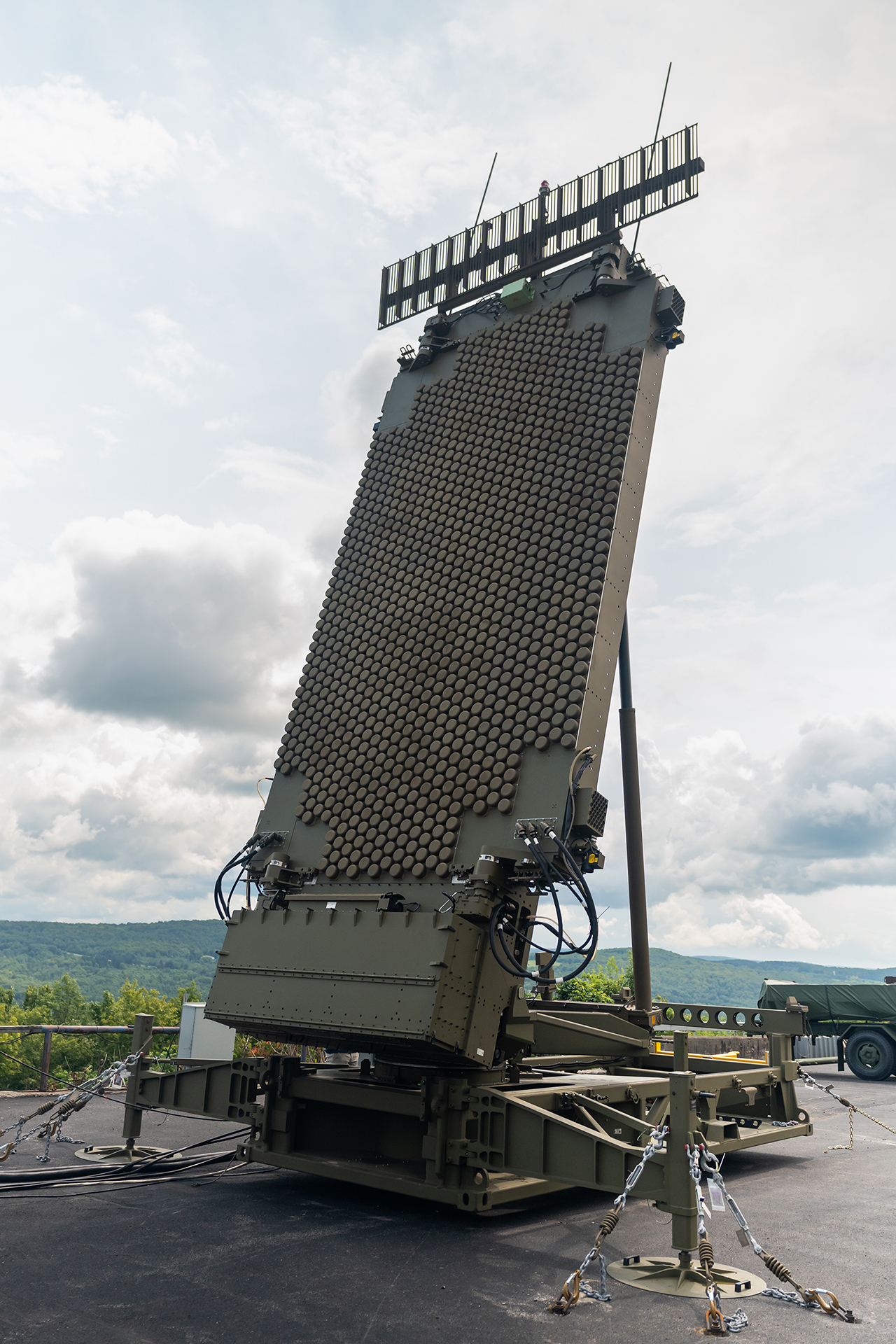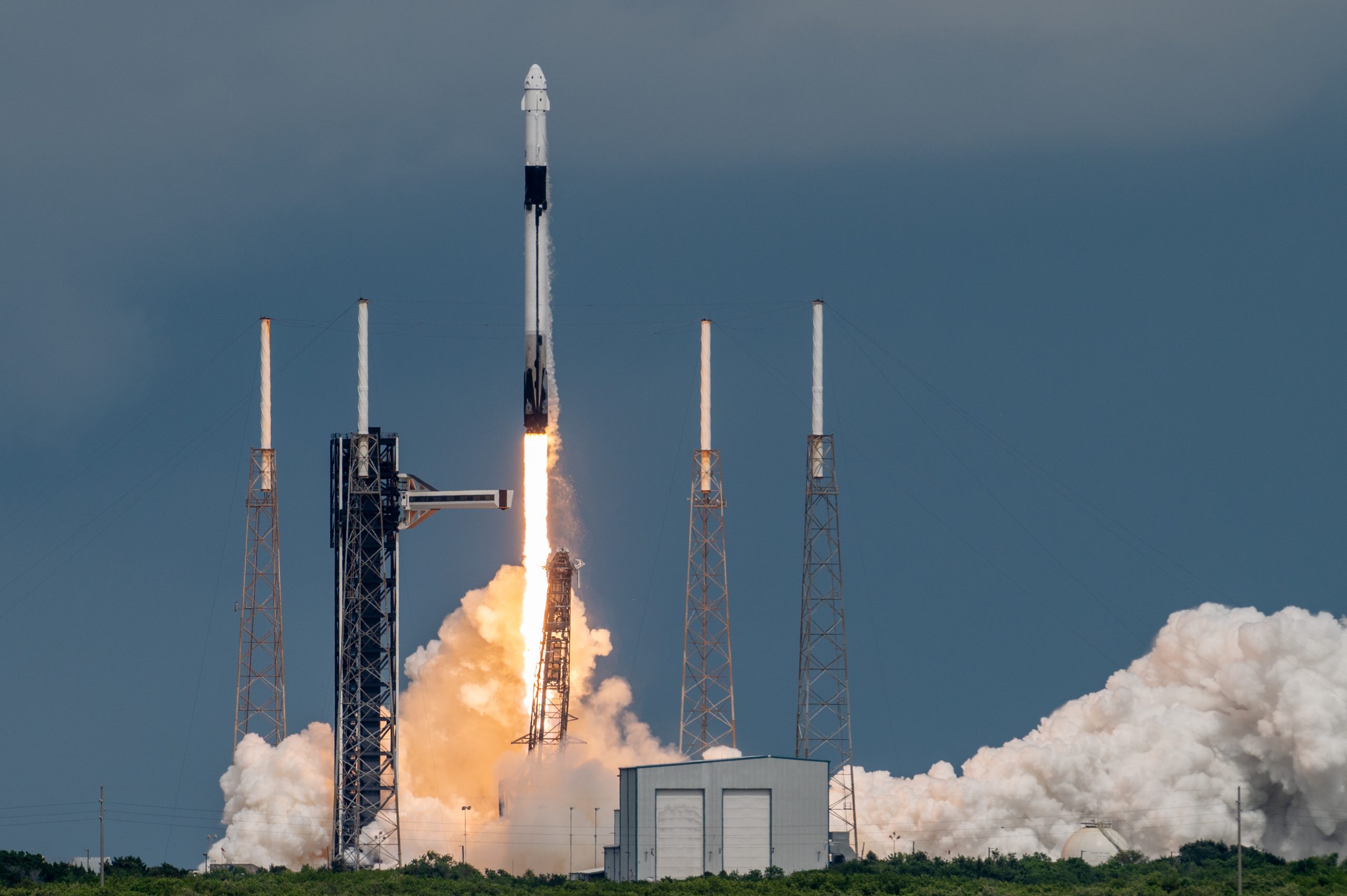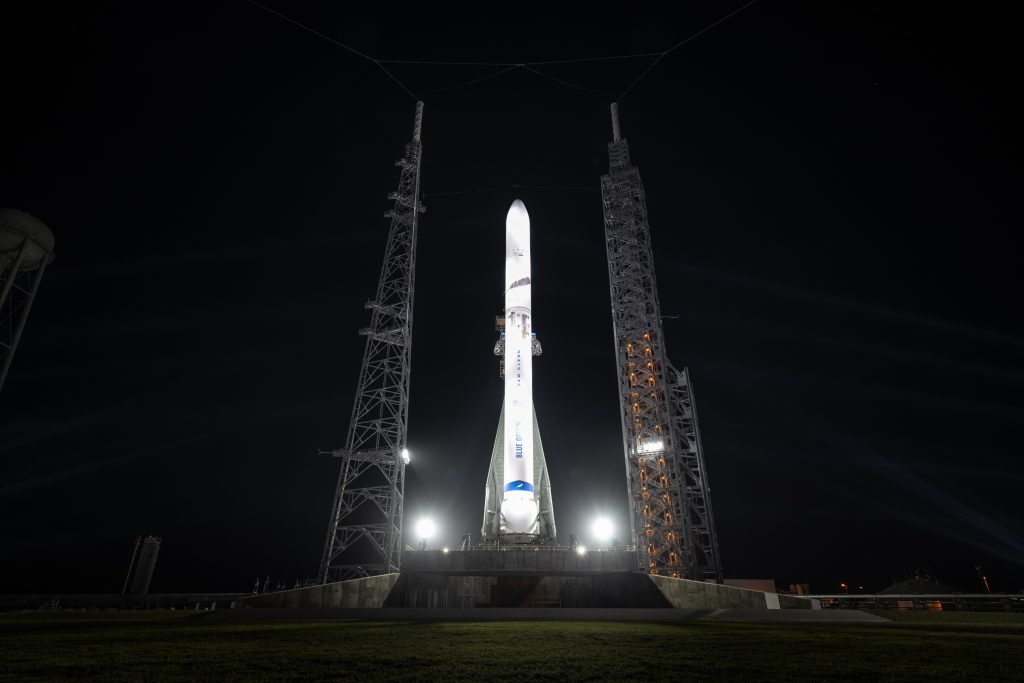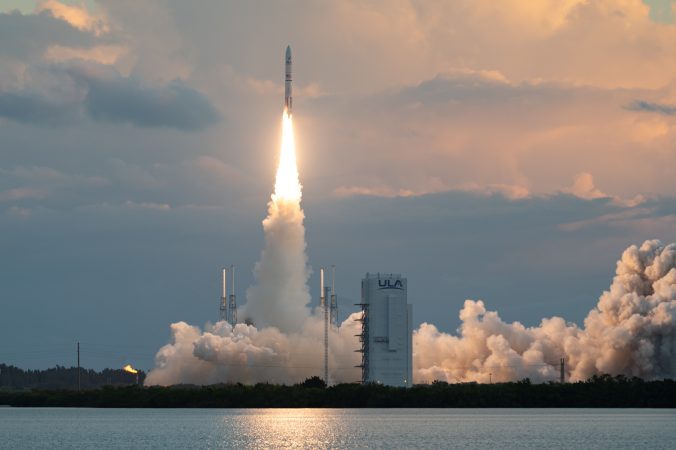COLORADO SPRINGS, Colo.—The Space Force will have one of its satellites refueled for the first time next summer, an initial step toward a future in which satellites can maneuver like aircraft in the sky or ships on the sea to dodge threats and hold adversaries at risk.
However, there is also uncertainty about whether the Pentagon will invest heavily in the capability and what model for refueling it might pick as the best option.
Startup Astroscale announced the summer 2026 target date for the first refueling mission at the Space Symposium. Its APS-R spacecraft will launch to just above geosynchronous orbit, refuel a Space Force satellite, refuel itself from another spacecraft built by fellow startup Orbit Fab, then refuel another Space Force bird.
Typically, operators try to conserve satellites’ fuel as much as possible. Once the spacecraft runs out, its service life is functionally over. Space Force leaders have suggested they want to be able to maneuver “without regret” to adapt to an increasingly congested and contested environment. To do so will likely require some kind of logistical infrastructure.
“Logistics are no longer theoretical. They are operational,” said Clare Martin, Astroscale’s executive vice president. “It’s about enabling sustained maneuverability, extending the life of critical space assets, and giving our national security community the ability to adapt quickly in a dynamic space domain.”
Astroscale’s mission has a six-month window, but the actual refueling will happen much quicker, said Ian Thomas, the project manager at Astroscale. Both Astroscale and Orbit Fab’s satellites will stay above GEO so that they can avoid interfering with other satellites in the orbit and drift relative to them, getting closer to potential client satellites as needed.
Astroscale and Orbit Fab had previously announced a partnership in January 2024—Orbit Fab wants to build fuel depots that function as “gas stations in space” where refueling “shuttles” like APS-R can collect fuel to carry to other satellites.
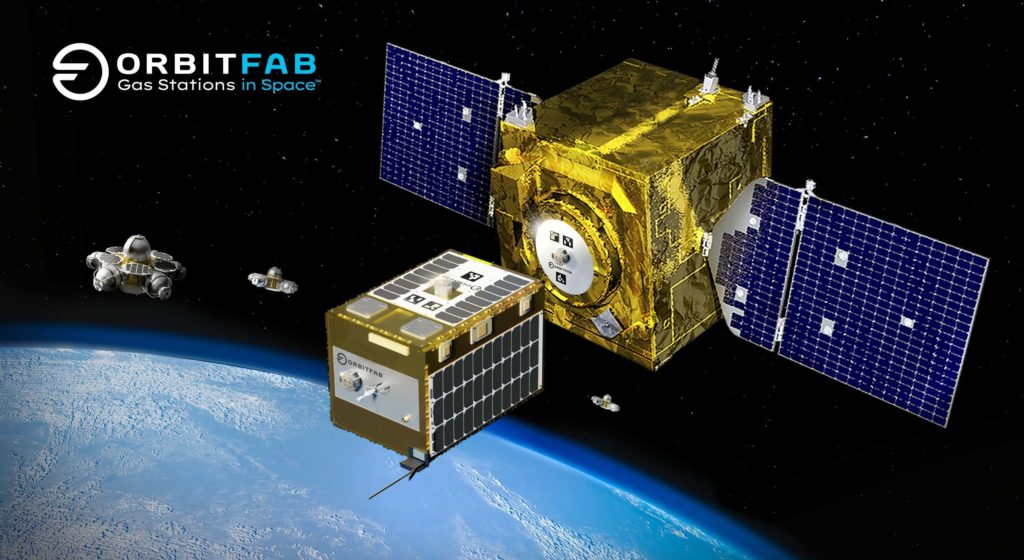
Orbit Fab’s first depot will launch on the same rocket as Astroscale’s refueler in June 2026, Adam Harris, chief commercial officer at Orbit Fab, confirmed in an interview with Air & Space Forces Magazine.
The mission’s funding is coming from multiple sources—a sign of both the broad interest in refueling’s potential and its uncertain market.
- Space Systems Command awarded some $44.5 million in contracts back in 2022 for two “Tetra-5” satellites that will be refueled.
- The Defense Innovation Unit awarded a $13.3 million contract for Orbit Fab’s depot as part of its RAPIDS program.
- The Space Enterprise Consortium, which exists to reach out to nontraditional contractors and small businesses, awarded a $61 million contract to Astroscale for the refueler satellite.
Space Force and industry officials alike said the demo mission is critical for the future of in-orbit refueling. Lt. Gen. Philip A. Garrant told reporters during a separate media briefing that he’s still not entirely sure the Space Force should go all-in on the idea, given how much it may cost to launch fuel depots or refueling satellites. First, he wants to see how the demonstration goes.
“One of the biggest things that we want to get out of it is to help us flesh out the requirements and [concept of operations] and understand the real feasibility,” Garrant said. “And does it make sense? Is this a good business case? Does it make sense to do that, particularly when you talk about [the cost of] launch, or is it to better spend money on a cheaper satellite that’s just cheaper to replace?”
Unsurprisingly, Orbit Fab doesn’t think so.
“Is refueling less expensive than building and launching a new satellite? In almost all cases, our answer is yes,” Harris said.
Given the Space Force’s limited budget, the question of cost is especially important. The service put just $20 million toward space access, mobility, and logistics in its fiscal 2025 budget, but it has outlined no further plans, and Garrant raised the possibility that new forms of propulsion may eventually mean spacecraft are not as limited by fuel.
Regardless, there is clear interest from operators in being able to maneuver their satellites. U.S. Space Command boss Gen. Stephen N. Whiting said in a keynote speech at the symposium that his command is working with the Space Force’s innovation arm, SpaceWERX, on that demand.
“We will soon be identifying 10 proposals for $1.9 million each in funding over a 15-month period of performance,” Whiting announced. “This effort will continue to invest in the most promising technology from commercial industry to help us solve the sustained space maneuver challenge.”
In the past, Space Force and industry officials have talked about the military’s need for space maneuver so that satellites can dodge attacks by China or Russia and keep performing their mission. Now, they’re adding another operational factor into the calculus.
‘There’s also the proactive side, or offensive side,” said Harris, “Which is, ‘I want to move my spacecraft to a new theater. I’ve gone from this area, and I need to surge to a new place.’ Lots of examples of how that could work, whether it’s communication or missile warning or those type of things.”
“Clearly, if we’re going to have an offensive or defensive capability, it has to be able to maneuver to the target or maneuver to the high-value asset that it’s defending,” added Garrant. “So all of those consume a limited fuel capability. So how do we make it so that we’re not limited by the fuel?”
Astroscale and Orbit Fab aren’t the only firms trying to answer that question. Northrop Grumman has developed its own refueling interfaces, as well as its own tanker spacecraft that will have enough fuel to maneuver between satellites and refuel them.
Last week, Northrop announced it had received contracts of its own from Space Systems Command for a program called Elixir—a satellite bus and refueling payload that can perform rendezvous and proximity operations, which will dock with a Space Force “Tetra-6” satellite spun off from the “Tetra-5” program.
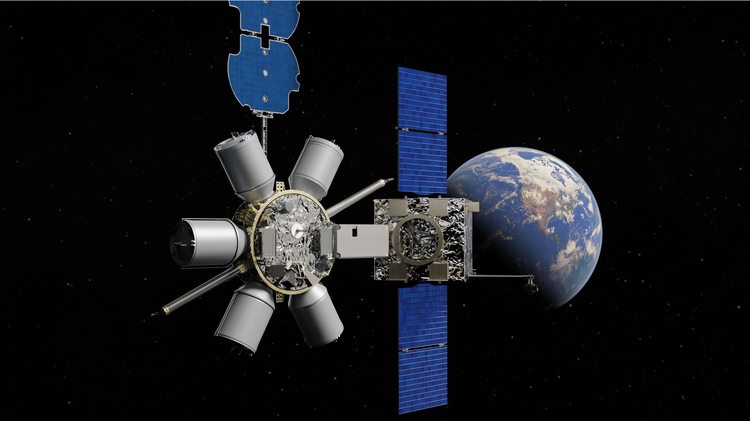
A spokesperson for Space Systems Command told Air & Space Forces Magazine the demonstration is expected to occur no earlier than 2028.
In a statement, Northrop’s program manager for in-space refueling Lauren Smith touted the company’s demo as a way to “unlock new possibilities for dynamic space operations, providing the sustained maneuverability our customers need in a complex environment.”
Northrop’s model for refueling doesn’t require depots to work, while Orbit Fab and Astroscale’s is meant to be a long-term solution, with its satellites available for operations for years.
In either case, Garrant had a word of caution.
“You could have the best gas tank idea in the world as a satellite provider, but we still have to get you to the orbit of the target of interest,” Garrant said. “And if that’s GEO, that’s a high-energy launch, that’s not an insignificant investment from a launch perspective. So I advise these companies that are looking at abilities to create maneuver without regret, don’t forget to close the business case on launch too.”
